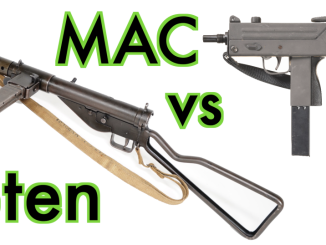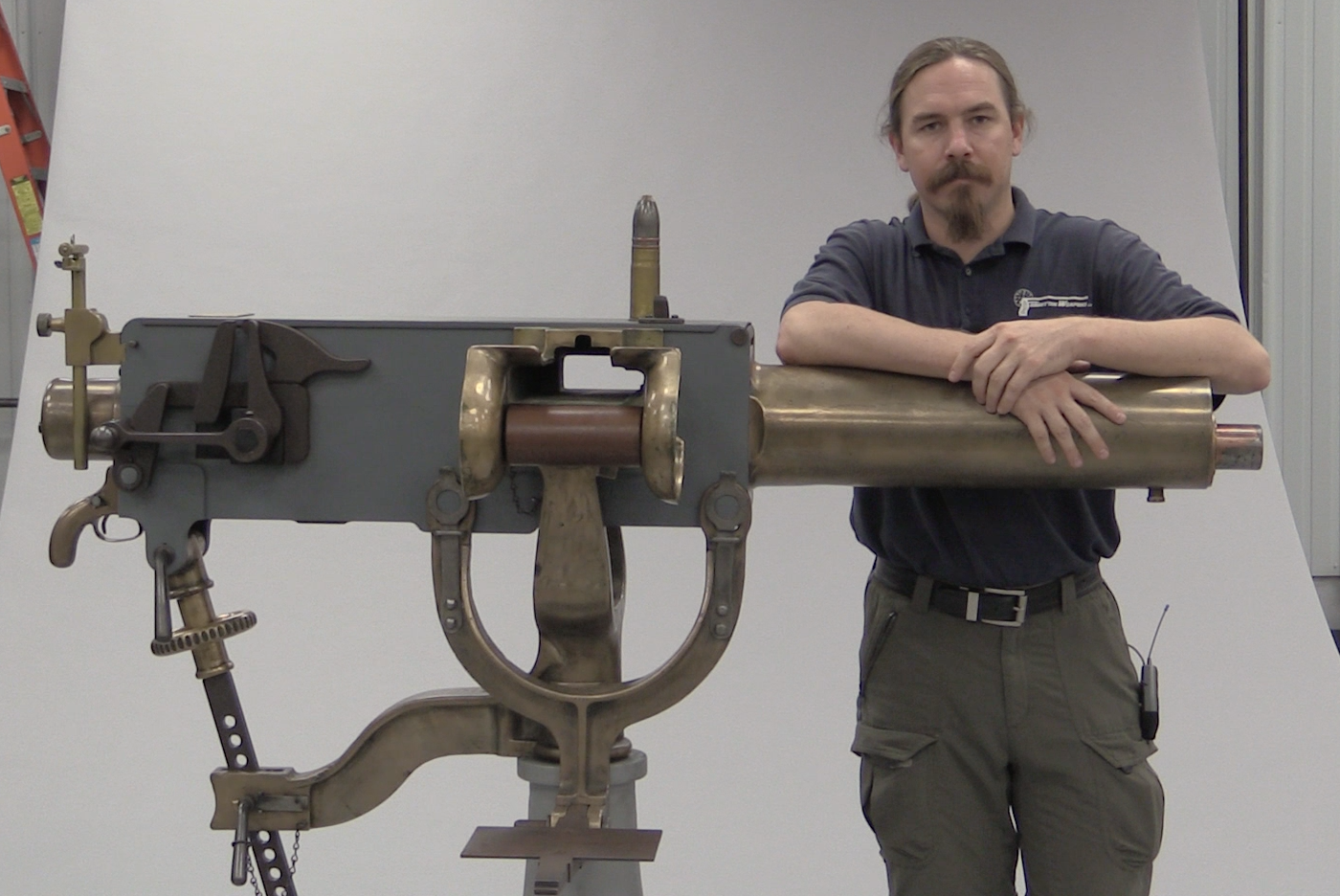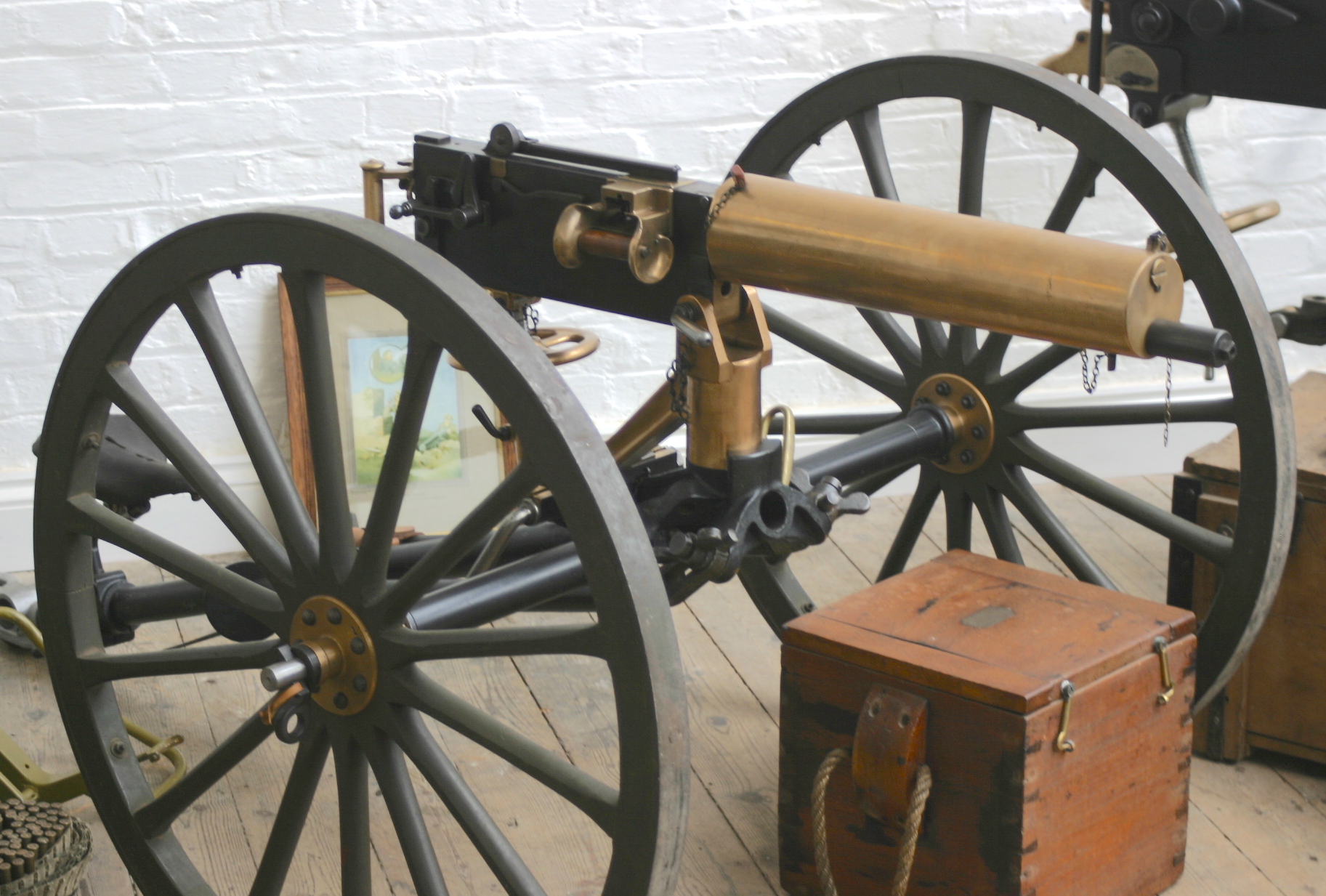I have done several previous videos on the Boys antitank rifle, but never actually fired one – until today! We’re out at the range with a MkI Boys and five rounds of its .55 Boys ammunition. So let’s see if it’s an painful to shoot as people say…
Related Articles

Commentary
Sten MkII vs Ingram M10/9 (w/ John Keene)
If you had to pick one, would you take a Sten MkII or an Ingram M10/9? This applies specifically to the guns in their original factory configurations; no Lage products allowed! It’s hard to come […]

Artillery
Maxim PomPom 37mm Machine Gun
“Pom-Pom” was the name given to the 37mm Maxim gun by the Boers of South Africa, based on the gun’s sound. It was a Maxim machine gun scaled up to the quite impressive 37mm caliber, […]

Heavy MGs
The World Standard Maxim Gun
From 1887 onward, the gun Hiram Maxim was producing was what he called the World Standard. He had finally perfected the machine gun design to his satisfaction in 1887 and with this design in hand […]

Tungsten is more than twice as dense as steel.
The tungsten core bullet is lighter because it used an aluminium outer with a tungsten core as a penetrator. Aluminium kept the weight down to increase MV and hence kinetic energy, like a crude sabot.
A little correction: tungsten is denser than steel.
The lighter tungsten core is not only smaller in diameter and harder but it also allows for more velocity with the same cartridge. All this leading to improved armor penetration.
Lol, beat you to it :p
I guess you are afraid we will laugh at your marksmanship. You speak of “Clay Pigeon” targets, but will not let us see them. Mae is not afraid . I guess this proves again she is a better marksman.Are you really shooting bullets or ate those recoil effects just computer generated?
Surprisingly little smoke.
Possibly old, partially decomposed gunpowder.
Therefore, the recoil is weak.
We need to dig deeper into the chemistry…
A modern reproduction Boys would actually be legally nothing more than a bolt-action rifle. One in .50 BMG, or for that matter .408 CheyTac, would be highly interesting.
Of course, in CA, it would have to be made without a pistol grip.
cheers
eon
Pistol grips are fine for bolt guns, which can be just as “assaulty” as you’d like – hence the manual conversion kits for CA ARs.
Yeah, and I bet mainstream Californians would be terrified of INCREDIBLY OBVIOUS BROOMSTICKS with pistol grips. JUST KIDDING.
Yeah, rocky ground and flying pebbles does not make for a fun time at the range. Love the gun. Give me a grassy field any day, or at least a sturdy shooting table.
I don’t always shoot prone, but when I do, I have a 4’x4′ sheet of plywood I put under the muzzle.
I had a chance to buy one back in 1964. If I remember, about $120. Ammo was $1.50 each. Not NFA then. More regrets.
So where’s the Girls’ Antitank Rifle
No 55 cal machine gun – Rolls Royce tried after building a 50 BMG one
https://en.wikipedia.org/wiki/Rolls-Royce_Experimental_Machine_Gun
From the Rooshian version of Forgotten Weapons
https://topwar.ru/129706-krupnokalibernyy-pulemet-rolls-royce-experimental-machine-gun-velikobritaniya.html
but was told to go back to making Merlin and Griffon aircraft engines (Its 40mm 2 pounder was adopted to a limited extent by the Royal Navy on Motor Gunboats)
https://s3-ap-southeast-2.amazonaws.com/awm-media/collection/077964/screen/6052557.JPG
https://i.pinimg.com/originals/b3/93/0c/b3930c3e44e38f9fc9dd93de2ebf8819.jpg
My understanding is that some units of the Commonwealth Division showed up in Korea with the AT rifle, but the lack of ammunition led to some being converted to 50 cal BMG as heavy sniper rifles
United States – used by Marine Raiders.[18] Authorized for US Army Rangers in 1943, but not used. During the Korean War, the Marine Corps borrowed some Boys rifles from Canadian troops, strengthened the action and mounted them with scopes. They were used as long-range sniper rifles on an experimental basis, firing double charged .50 BMG ammunition. These rifles had a range of over 2,000 yards.”
Double Charged 50 BMG – WHHHOOOO-AH!!
“(…)was told to go back to making Merlin and Griffon aircraft engines (Its 40mm 2 pounder was adopted to a limited extent by the Royal Navy on Motor Gunboats)”
Rolls-Royce 12,7 mm machine gun http://airwar.ru/weapon/guns/rr127.html
was crafted from RR50 alloy, despite that it weighted 22,25 kg – as opposed to <22 kg for steel Berezin Universal firing more powerful cartridge.
More importantly British managed to mount more effective 20 mm autocannons in their fighter aeroplanes and could source .50 Browning machine gun from U.S.A. if needed, so there was little interest in starting production of own similar weapon.
The book says the Spitfire IXe came standard with 2 .50 BMGs in the wings, 2 20mm Hispano cannon inboard of them, and four 0.303in Browning MGs outboard. This was the “e” type wing; Spitfire “wings” were defined by their armament fit.
In practice, the 2 .50 BMGs were usually removed, because doing so allowed the space slated for them and their ammunition boxes to be used for more 20mm Hispano cannon ammunition, in fact nearly doubling the number of rounds per gun.
As for flexible .50s on aircraft such as the B-25G (RAF Mitchell III), in the North African campaign at least, they were generally removed as being unneeded excess weight. The .50 M3 aircraft guns in question mostly ended up with the LRDG and the SAS. If you look at photos of the SAS Jeeps with .50s mounted in front of the right-hand front seat, they have the trademark perforated cooling jackets and sights of M3 aircraft flexible guns. They are not M2 ground guns.
The only RAF aircraft that mounted .50 BMGS other than Lend-Lease American ones were Lancaster and Halifax heavy bombers, which replaced the quadruple 0.303in Brownings with twin .50 BMGs in their power turrets. This was to give them better odds against Luftwaffe night-fighters, which were mostly armed with 20mm or 30mm cannon.
cheers
eon
The original justification for the RR was that the US couldn’t produce then guns fast enough (although apparently there was no problem with ammunition), when that changed, RR tried to keep the project alive by going to .55 caliber. But, like the US .60 caliber, it fell between the Browning and Hispano and so, was cancelled. Why .60, because by US Army regulations, that was the upper limit of small arms. Sixty-one caliber would be artillery ammunition (hence 20 mm (.79) guns were cannon, not machine guns) and under the purview of the Artillery Section, not the Small Arms Section at Ordnance Corps Headquarters in DC. Can’t have that, you know.
What the British wanted to do was install the E wing on their Spitfires and Hurricanes
Spitfire
A 8 .303 Brownings
B 2 20mm Hispanos and 4 .303 Brownings
C 4 20mm Hispanos
D No guns Extra fuel (Photo Recon models)
E 2 20mm Hispanos and 2 .50 Brownings
Hurricane
A 8 .303 Brownings
B 12 .303 Brownings
C 4 20 mm Hispanos
D 2 40mm Vickers Type “s” 2 .303 Brownings with tracer
So you could get a Spitfire LF Mark IX D = Low Level Fighter, Mark IX airframe, Engine with supercharger blades cropped, wing tips clipped (to improve roll rate) and 4 20mm Hispanos (There were plain Mark IX’s as well HF High Altitude Fighters)
.55 Boys Ammunition
https://en.wikipedia.org/wiki/.55_Boys
This contradict https://sites.google.com/site/britmilammo/-55-inch-boys-2
which states that .55 inch Boys developed from 13.2mm Hotchkiss case
As far as I know the Boys was last used in action in 1965, by the IRA who used one to fire on HMS Brave Borderer of the Royal Navy.
This is quite a good account:
https://militarymatters.online/the-last-hurrah-of-the-boys-anti-tank-rifle-when-the-ira-shot-a-royal-navy-torpedo-boat/
Got to fire one in .50BMG at a Big Sandy shoot. 3 rounds made my mind up that it was definitely “not my cup of tea”.
It took me only two rounds w/ an M82 for me to become generous & give away the rest of the 10 round box. I’ll never fire another .50 w/ a muzzle brake. The concussion can’t be good for the noggin.
When I was a boy (1950’s) in PA My father and I would go groundhog hunting every weekend. There were rumors of a fellow who had a Boys mounted on a trailer he pulled with a WW2 jeep which he used on the groundhogs. You could buy them by mail then.
I’ve long thought that I’d be interested in watching somebody else fire one of these monsters. Now I have, and sure enough, it’s fun. To watch, I mean.
It would also be fun and interesting to see what kind of groups you can get out of .55 wartime ammo or, better, modern reloads.
If you want to find out more about an actual user of the Boys Anti-Tank Rifle, read the VC recommendation for Australian forward artillery observer Sir Roden Cutler VC, in the Middle East.
In the 1980s, some commercial fishermen in Georgia and Florida, concerned about being hijacked by drug smugglers, supposedly mounted .50 BMG Boys rifles on the flying bridges of their fishing boats.
As the owner of a Boys AT rifle in .50BMG and having fired both .55 and .50BMG versions, there isn’t much difference in the felt recoil. As you’ve discovered firing from the ground is the worst problem with dirt and muck flying up and into your face.
If you want to see video of myself and The Gunny (RIP) firing my gun, watch season 1 episode 4 of Gunnytime !!!
Cheers to you guys
Gary Archer
The 55 Boys ctg was developed from the 50 Browning. The first step was the addition of the belt to the case. This was called the Stanchion Cartridge, Stanchion being the code name for the project. The bullet diameter was increased to give a larger AP core.
AP ammo was made in 3 marks. Ball, practice, drill ,dummy, proof and tracer ammo was also made but is very scarce due to limited production.A 22 adaptor ctg was also made.
Google British Military Small Arms Ammunition for info on this and other ctgs.